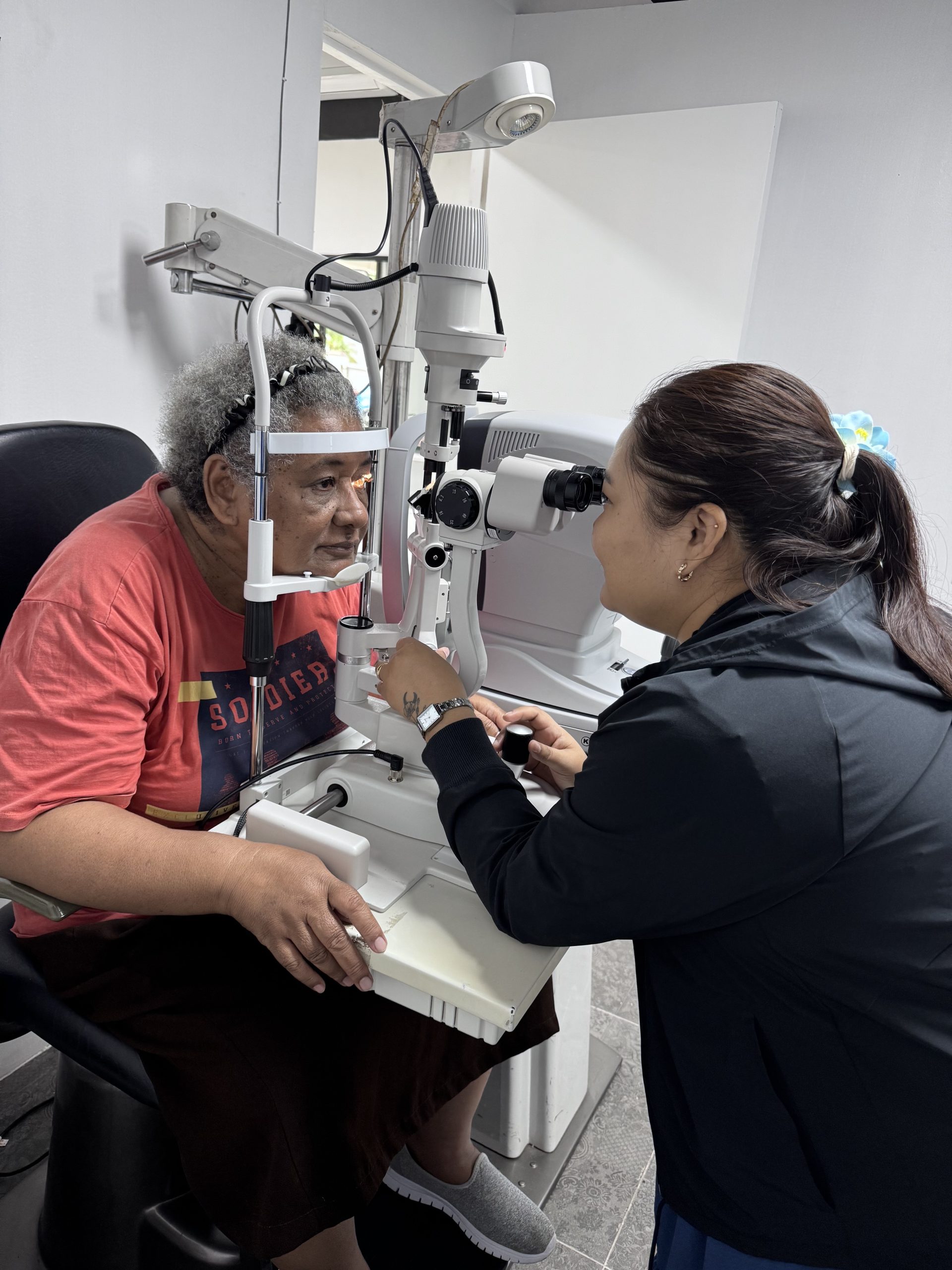Fiji, like many Pacific Island nations, is experiencing a steady shift in its population structure. Improvements in healthcare, changing family dynamics, and longer life expectancy mean that the elderly population is slowly but steadily growing. While this is a positive sign of progress, it also brings new health challenges – one of the most significant being age-related vision problems.
Good eyesight is essential for independence, mobility, and quality of life, yet many older Fijians continue to struggle with preventable or treatable eye conditions. Understanding these issues is the first step toward improving eye health outcomes for the elderly across Fiji’s urban, rural, and maritime communities.
The growing prevalence of cataracts
Cataracts are the leading cause of blindness in Fiji, particularly among older people. A cataract occurs when the lens of the eye becomes cloudy, gradually reducing vision. This process is a natural part of aging, but factors such as long-term sun exposure, smoking, poor nutrition, and limited access to healthcare can accelerate or worsen the condition.
For many elderly Fijians, especially those living in remote areas or outer islands, cataracts progress silently. Vision becomes blurry, colours lose their brightness, and activities such as reading, cooking, or navigating the home become increasingly difficult. Unfortunately, many individuals assume that losing vision is simply part of getting older, delaying treatment until the condition is advanced. The good news is that cataract surgery is safe and highly effective, yet awareness and accessibility remain the biggest barriers.
Encouraging early checkups and expanding mobile eye clinics could help reduce the burden of cataract-related blindness in the elderly.
Diabetic Retinopathy: A growing concern
Diabetes is a major health issue in Fiji, with one of the highest prevalence rates in the Pacific. As a result, diabetic retinopathy has become a significant cause of vision loss among older adults. This condition damages the blood vessels at the back of the eye due to high blood sugar levels. Left untreated, it can lead to severe vision impairment or blindness.
Elderly Fijians with diabetes often face challenges in managing their condition, such as limited financial resources, inconsistent medi0cation access, and difficulty attending regular checkups. Many do not experience symptoms until the disease has progressed significantly. Early detection is crucial because diabetic retinopathy can be treated or slowed through strict blood sugar control and timely laser or injection therapy.
Community education remains vital. Older adults, together with their families, must understand that regular eye examinations at least once a year are essential for anyone living with diabetes. Strengthening partnerships between eye care specialists and general practitioners can also support early referrals and better disease management.
Glaucoma: The silent thief of sight
Glaucoma, often called the “silent thief of sight,” is another vision issue affecting Fiji’s elderly population. This condition damages the optic nerve, typically due to increased pressure in the eye, and can lead to permanent vision loss.
What makes glaucoma particularly dangerous is that it usually has no early symptoms. By the time an elderly person notices vision changes, significant damage may already have occurred. Because the condition is irreversible, early detection and lifelong management are essential. Treatments include medicated eye drops, laser therapy, or surgery, depending on severity. More community screening programs and awareness campaigns could help identify at-risk individuals before the disease progresses.
Age-related macular degeneration
Age-related macular degeneration (AMD) affects central vision, making it difficult for older adults to read, recognise faces, or perform tasks requiring fine detail. Although AMD is less common in Fiji than cataracts or diabetic retinopathy, it remains an important issue as life expectancy increases.
Risk factors such as smoking, high blood pressure, and prolonged exposure to UV light can contribute to the progression of AMD. Because Fiji’s tropical environment exposes people to strong sunlight year-round, promoting protective measures such as wearing sunglasses and hats is particularly important for prevention.
Challenges in accessing eye care
One of the biggest barriers older Fijians face is accessing consistent, high-quality eye care. Urban residents, especially those in Suva, Nadi and Lautoka, are more likely to reach eye clinics, optometrists, and hospitals. However, many elderly people live in rural villages or scattered maritime islands where eye care services are limited.
Transportation difficulties, mobility issues, cost of travel, and lack of awareness often mean that vision problems are left untreated for years. Community outreach programs have made significant progress, but more regular and widespread mobile eye screenings are needed. Training more local eye care professionals, including nurses and primary health workers, would help strengthen long-term capacity.
The importance of family and community support
In Fiji’s communal culture, family plays a central role in elderly care. Supportive relatives can make a tremendous difference by encouraging routine eye checkups, ensuring medication is taken correctly, and helping navigate the healthcare system. Community education can empower families with the knowledge they need to assist aging loved ones.
Looking ahead: Improving vision for Fiji’s elderly
As Fiji’s aging population continues to grow, addressing eye health must become a national priority. Preventable blindness and vision impairment take a heavy toll not only on individuals but also on families and the healthcare system. With early detection, improved access, and increased awareness, many common age-related eye conditions can be treated or managed effectively.
By investing in outreach services, training eye care professionals, and strengthening public education, Fiji can ensure that its elderly population enjoys clearer vision, greater independence, and a better quality of life.



